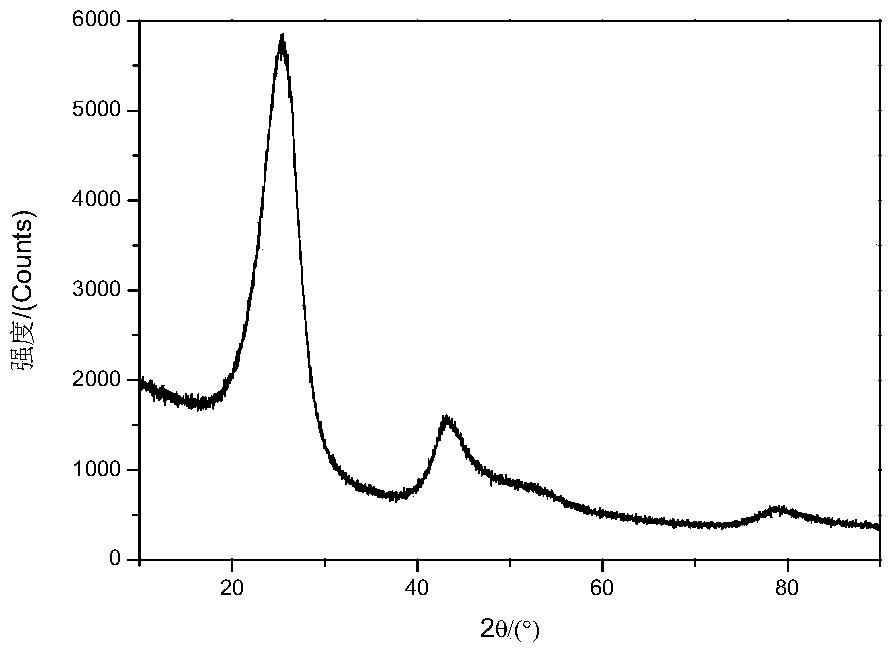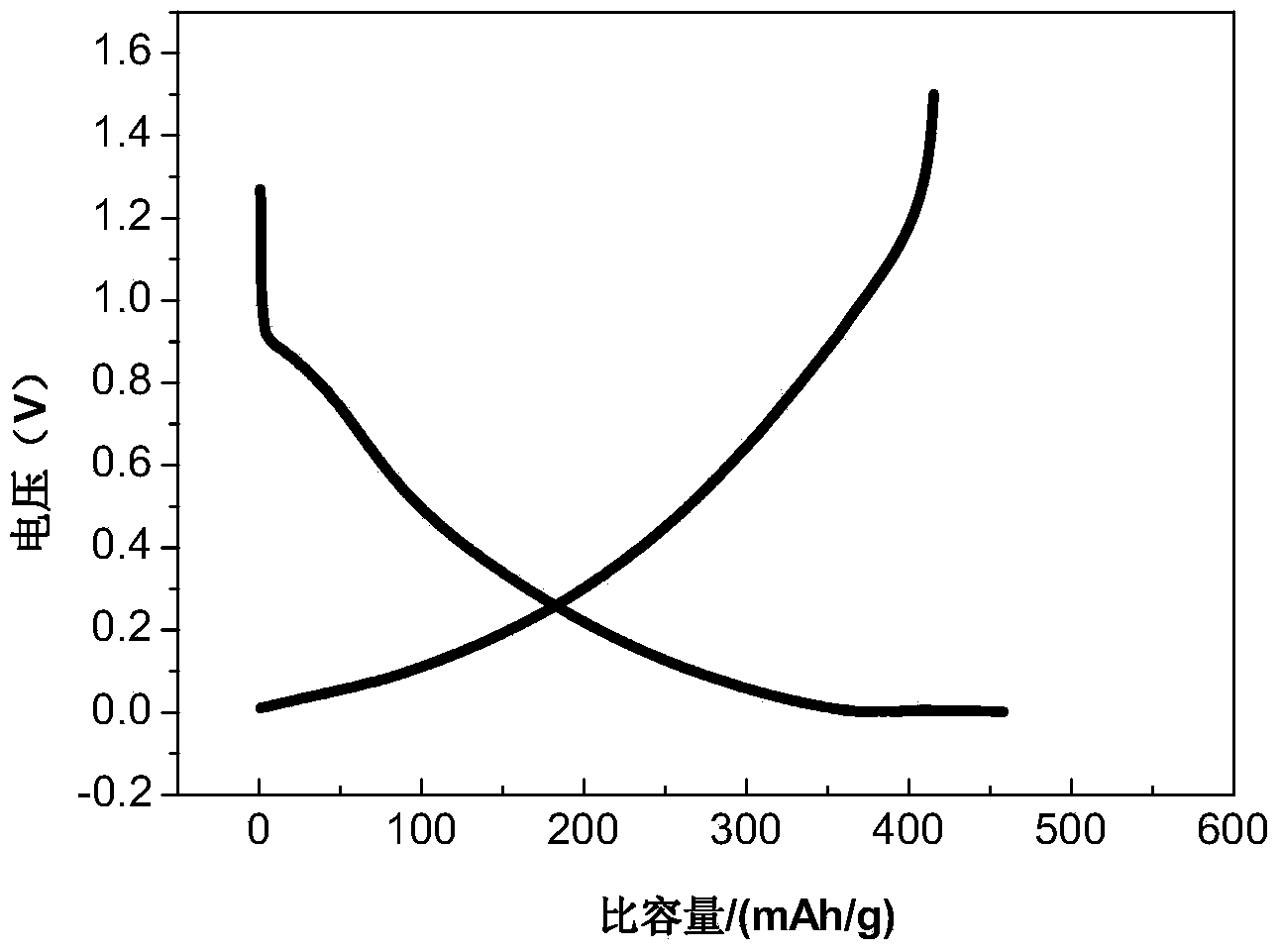Soft carbon anode material for lithium-ion power and energy storage battery as well as preparation method and application of soft carbon anode material
A technology for energy storage batteries and anode materials, applied in battery electrodes, secondary batteries, circuits, etc., can solve the problems of high impurities, low Coulombic efficiency, and low energy density of soft carbon anode materials, so as to improve cycle performance and enhance materials capacity and porosity improvement
- Summary
- Abstract
- Description
- Claims
- Application Information
AI Technical Summary
Problems solved by technology
Method used
Image
Examples
Embodiment 1
[0077] 1. Put heavy oil from the petroleum industry, ferric fluoride and nickel nitrate into the autoclave at a mass ratio of 100:10:2, heat up to 100°C, and stir at a speed of 60r / min for 10 hours.
[0078] 2. Raise the temperature to 380°C, feed in nitrogen, keep the pressure at 4MPa, stir and react at a speed of 40r / min for 2 hours; raise the temperature to 420°C, keep the pressure at 20MPa, and react at a speed of 120r / min for 2 hours, the system generates heat Polycondensation reaction to obtain the primary product of the mesophase.
[0079]3. Mix the mesophase primary product and toluene at a mass ratio of 1:2, heat up to 200°C, stir for 3 hours, filter and wash with ethanol to obtain the mesophase carbon microsphere precursor.
[0080] 4. Mix the precursor of mesophase carbon microspheres and nitric acid with a concentration of 10% at a mass ratio of 10:90, heat up to 120°C at a rate of 0.5°C / min, stir for 36 hours, and the stirring speed is 60r / min. Centrifugal washin...
Embodiment 2
[0085] 1. Add petroleum pitch, aluminum nitrate, nickel sulfamate, cobalt oxalate and cyclopentadienyl dicarbonyl iron into the autoclave according to the mass ratio of 100:0.02:0.1:5:0.22, raise the temperature to 180°C, and use 40r / min speed stirring for 30 hours.
[0086] 2. Raise the temperature to 320°C, feed in nitrogen, keep the pressure at 8MPa, stir and react at a speed of 100r / min for 0.4 hours; raise the temperature to 500°C, keep the pressure at 32MPa, and react at a speed of 180r / min for 18 hours, the system generates heat Polycondensation reaction to obtain the primary product of the mesophase.
[0087] 3. Mix the mesophase primary product and toluene at a mass ratio of 1:0.4, raise the temperature to 200°C, stir for 0.2 hours, filter and wash with acetone to obtain the mesophase carbon microsphere precursor.
[0088] 4. Mix the mesophase carbon microsphere precursor with 1% perchloric acid at a mass ratio of 45:45, raise the temperature to 160°C at a rate of 3...
Embodiment 3
[0093] 1. Add coal tar and ferrous oxalate into the autoclave at a mass ratio of 100:20, raise the temperature to 220°C, and stir at a speed of 140r / min for 0.1 hour.
[0094] 2. Raise the temperature to 260°C, feed nitrogen, keep the pressure at 10MPa, stir and react at a speed of 140r / min for 20 hours; raise the temperature to 570°C, keep the pressure at 15MPa, and react at a speed of 200r / min for 0.4 hours, the system generates heat Polycondensation reaction to obtain the primary product of the mesophase.
[0095] 3. Mix the mesophase primary product and quinoline at a mass ratio of 1:12, raise the temperature to 70°C, stir for 12 hours, filter and wash with ethanol to obtain the mesophase carbon microsphere precursor.
[0096] 4. The mesophase carbon microsphere precursor and the hydrogen peroxide with a concentration of 25% are in a mass ratio of 45:1, and the temperature is raised to 60°C at a rate of 15°C / min, and stirred for 30h at a stirring speed of 100r / min, using p...
PUM
| Property | Measurement | Unit |
|---|---|---|
| softening point | aaaaa | aaaaa |
| density | aaaaa | aaaaa |
| particle size | aaaaa | aaaaa |
Abstract
Description
Claims
Application Information
 Login to View More
Login to View More - R&D
- Intellectual Property
- Life Sciences
- Materials
- Tech Scout
- Unparalleled Data Quality
- Higher Quality Content
- 60% Fewer Hallucinations
Browse by: Latest US Patents, China's latest patents, Technical Efficacy Thesaurus, Application Domain, Technology Topic, Popular Technical Reports.
© 2025 PatSnap. All rights reserved.Legal|Privacy policy|Modern Slavery Act Transparency Statement|Sitemap|About US| Contact US: help@patsnap.com



